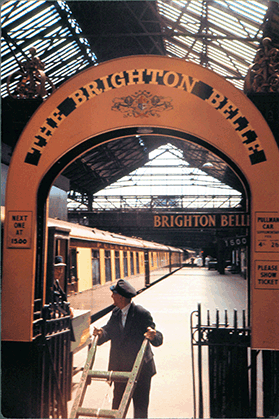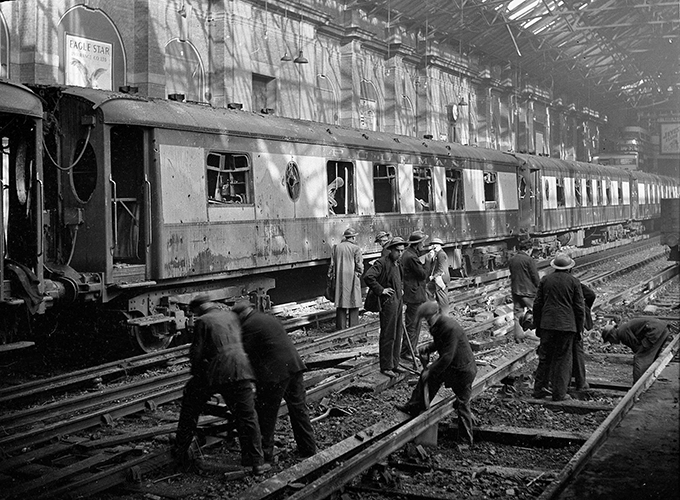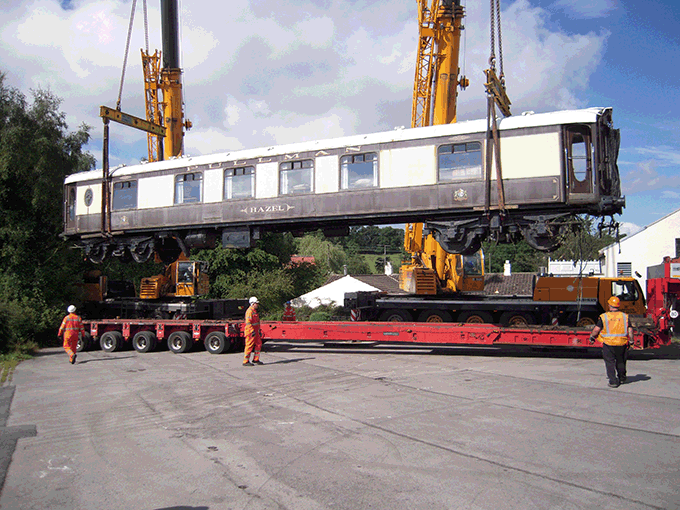It was the world’s most famous electric train, bringing daytrippers to the seaside town of Brighton, and now the Brighton Belle is getting back on its wheels as Neil Marshall of the 5BEL Trust reports.

The Brighton Belle was the flagship of a massive electrification programme for Southern Railway, kick-started in 1929 by Chancellor Winston Churchill’s attempts to boost employment in post-Wall Street Crash Britain. The removal of tax on first-class fares was the spur to introduce the third rail electric system across its network of lines south of London.
Metropolitan-Cammell was given the order to hand-build three all-Pullman five-car units to operate the Southern Belle service between London and Brighton, which commenced service on New Year’s Day, 1933.
Re-badged the ‘Brighton Belle’ a year later, these Pullman units were so advanced that they were the world’s first to be of all-steel construction. But the passenger would remember only the sumptuous Art Deco interiors with exotic hand-finished marquetry, silver anodised metal fittings, deep upholstered seats and the attentive white-jacketed Pullman waiters. The luxury was such that the Brighton Belle frequently operated as a Royal Train.

After 40 years of much-loved service (with the exception of a brief period out of action following bomb damage in the Blitz), British Rail took the Belle from service on the evening of 30 April 1972. The train was packed with acting royalty – including Sir Laurence Olivier, Vivienne Leigh, Joan Plowright, Dora Bryan and Jimmy Edwards, who caught the last train out of Victoria each night after the West End curtains went down – with massed brass and jazz bands and hundreds of well-wishers on the platforms at Victoria and Brighton Stations. The Belle no longer fitted in with British Rail’s re-branding as provider of ‘the high speed train’.
First takers for the carriages were the breweries, who saw the potential of Pullman carriages as cheap bolt-on restaurants, but these duties were short-lived. The exception was First Class Car ‘Hazel’, which operated as a popular (and well-maintained) Yorkshire restaurant until 2013 and was, reputedly, Prince Charles’s favourite place to dine.
A charity called the 5BEL Trust launched a search in 2009 for enough of the 14 surviving carriages to form a complete train. It took three years to acquire five, with a sixth arriving a year later. The challenge now was an engineering one, to rebuild and upgrade the train to permit it to return to the congested mainline of the 21st century. The train would now have to run at 90mph and offer a radically improved ride quality.

Externally, few would spot any difference from when the cars left the Saltley Works in 1932. But step into a carriage and you’ll see that the traditional skills of craftsmen, carpenters and upholsterers have returned the glorious interiors to their original Art Deco period style. For the first three cars alone, Wheathills of Derby employed 12 craftsmen full time for six months to restore the rare veneers of the interior panels, stripping away decades of degradation by sunlight and poor storage.
For the next 30 years, those who travel and dine on the Belle may not look much beyond the elegance of the marquetry, rich moquette fabrics and silvered brightwork. Yet it is the intelligent application of more modern technologies that will allow this iconic and wonderful train to carry passengers again on the mainline. A Train Protection Warning System has been fitted; automatic lifting shoe gear will facilitate running off the third rail; disabled passengers can be comfortably accommodated and the lavatory system is built around retention tanks.
After mainline testing and proving trials scheduled for the end of 2015, the 2016 mainline excursion programme will commence in April 2016. So Britain’s biggest rail restoration project will have finished and a new life for the 84-year-old train will have begun. The £6 million project cost is high, but the legacy for future generations is continued access to one of the 20th century’s design icons – back on the mainline where she belongs.
Related articlesFive things to do in Brighton |
Click here to subscribe! |
Download BRITAIN Magazine to your mobile today

 No mobile device? Purchase directly on Zinio for your desktop!
No mobile device? Purchase directly on Zinio for your desktop!





 © 2024
© 2024